How to make your own tea blend

Tea is the most popular beverage in the world, placing ahead of other well-loved beverages such as juices, beer and even coffee. This is unsurprising since there is a tea perfect for every occasion – whether an English Breakfast as a perk-me-up in the morning or a calming chamomile as part of your nightly wind down routine.
Besides being as a tasty drink to sip on, tea is also known for offering plenty of health and wellness benefits. According to HealthHub, tea contains high antioxidant levels which helps in high antioxidant levels which helps in reducing the risk of cardiovascular disease.
In addition, studies have also shown that teas can help in boosting our immune system, fight off inflammation and even minimise the likelihood of cancer and stroke.
For those of us weary and stressed from working from home, brewing a quick cup of lavender or mint tea can also introduce a little pocket of zen into our daily routine and serve as a great stress reliever!
However, while you can easily purchase tea blends from stores, high quality tea blends may be relatively costly. Some manufactured blends may even make use of artificial flavourings, which may be bad for our health in the long run.
The many benefits of making your own tea blend
Instead of buying pre-packaged tea, how about choosing to make your own custom tea blend? By purchasing loose tea leaves and herbs, it not only ensures a fresher and more robust taste but also promises for you to benefit from its higher nutritional value.

Beyond the taste and health advantages, brewing tea from loose leaves is also better for the environment! Often, teabags contain a small amount of plastic as manufacturers aim to enhance the durability of tea bags in hot water. When seeping our teabags, these micro plastics get broken down where we end up consuming them. Over long periods of time, this may result in many health issues. With its plastic contents, teabags also cannot decompose completely – just like plastic bags or plastic utensils – which makes them harmful to the environment.
So how can we make our own homemade tea blends? Here are three simple steps for you to do so, which can be easily customised to your personal nutrition goals and flavour liking. To ensure a well-balanced tea profile, each herb is measured in teaspoon proportions and can be brewed for 2-3 cups of tea.
Step 1 – Choose your blend bases
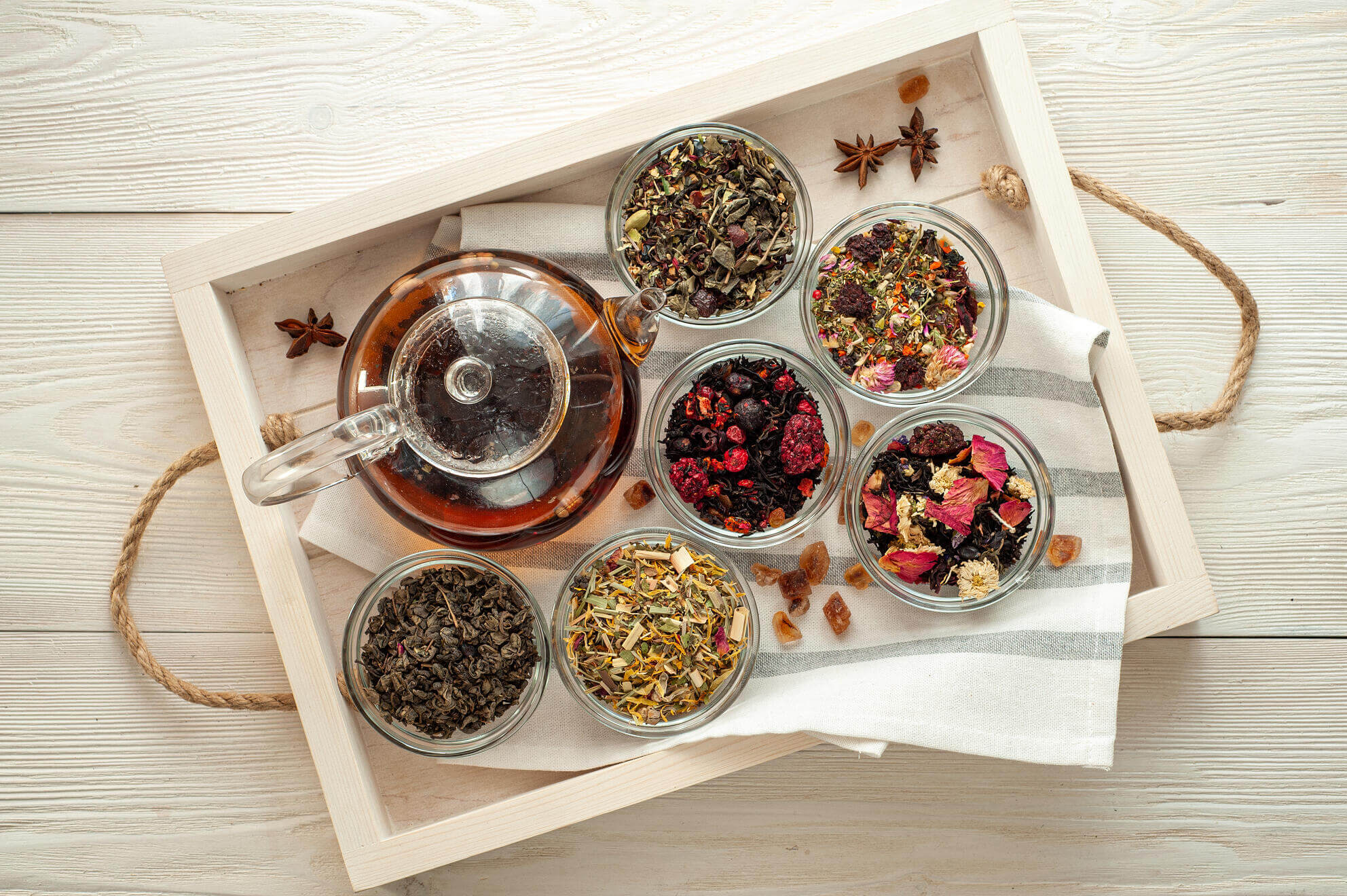
To begin, start off by identifying the purpose of your tea blend.
Are you looking to craft a blend that gives you a midday brain boost or to serve as a soothing end to your day? For those of us who experience bloating after a heavy meal, certain teas can also aid our digestion and help our bodies metabolise our food to reduce the discomfort.
Once we’ve identified the purpose of our tea, it’s time to choose the base herb! Some of the more commonly used base herbs include chamomile, which is known for its calming quality, peppermint that promotes alertness, and rosemary, which helps in improving our cognitive function. As this blend base builds the foundation of your tea, include 3 teaspoons for sufficient flavour.
Step 2 – Identify your complementary herb
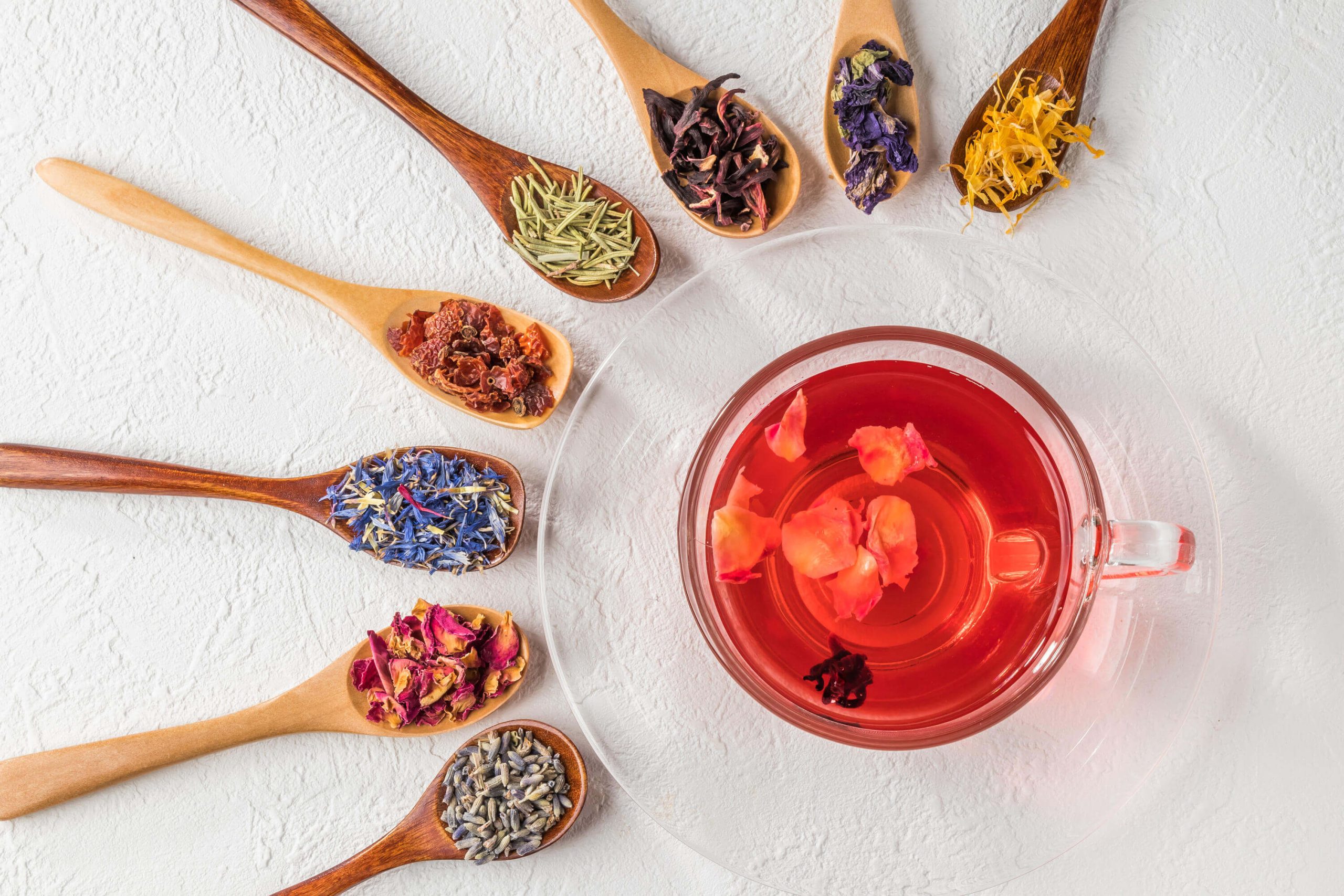
Next, you’ll need to choose your second-most dominant herb in your tea recipe. Depending on your blend’s base, this complementary herb can either help tone down the intensity of the main tea base or enhance its flavour and add to its profile complexity.
For our health junkies looking to make the most out of each cup of tea, you can also choose a complementary herb that offers additional health benefits! While there are no limits to which herbs to use as a complementary option, some of the more common choices are floral notes such as lavender, rosemary and elderberry. A few examples of this would be common favourites such as Jasmine Green Tea or Osmanthus White Tea. For this, add in 1 to 2 teaspoons into your tea blend.
Step 3 – Finish off with an accent herb
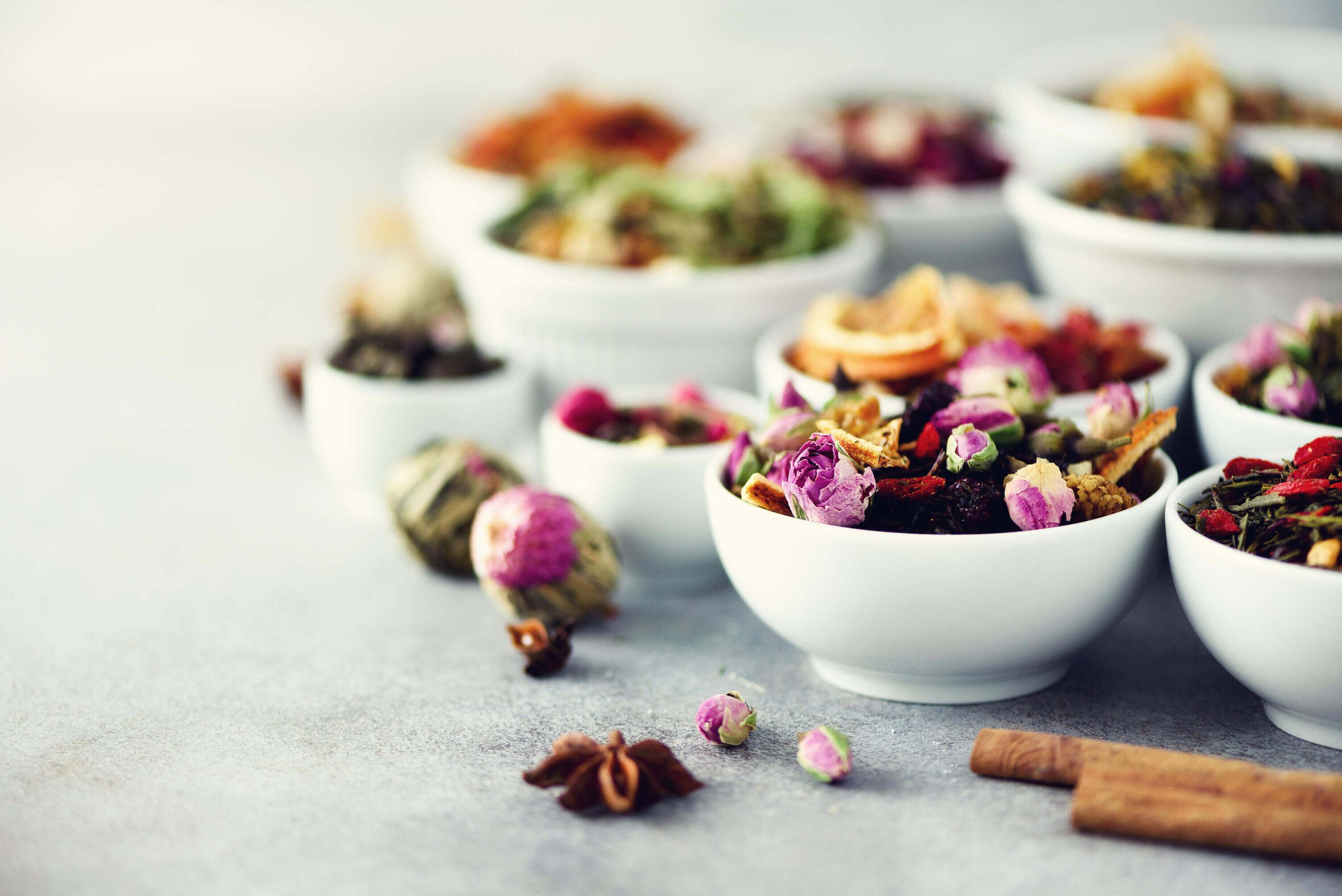
Finally, to round out the tasting notes of the first two ingredients, choose an herb that offers that delightful pop of flavour. Again, there are no boundaries as to which herbs you can use. You may choose either one of the aforementioned herbs, or even pick a personal favourite spice like nutmeg or cinnamon. For those who enjoy floral teas, wild rosebuds work perfectly for that delicious aftertaste.
For this accent herb, mix in just ½ to 1 teaspoon so that it does not overpower the overall tea flavour.
And there you have it! Your very own tea blend made for any occasion. As with any DIY, this is very much a trial-and-error process, and we encourage you not to be disheartened if you do not nail the yummiest blend on your first try – it’s perfectly normal!
If you’re looking for some tried-and-tested recipes as a first step, feel free to check out some delicious blends here! However, if you’re one of the more adventurous amongst us who’d prefer to experiment, here’s a tea blending template that we hope will help you along your DIY tea blending journey.
As we #PowerTheChange one cup of tea at a time, check out the range of herbs and loose tea leaves available at Unpackt, one of Singapore’s zero-waste grocery stores! Reduce unnecessary plastic packaging by bringing along your own reusable containers, such as airtight glass jars, to store the ingredients you need and keep them fresher for longer periods of time!
You can also spread the #JollyGreen spirit by making your own tea blends for your loved ones which not only serves as a great conversation starter to encourage them to go green for our environment, they are also thoughtful gifts to nudge them on a health-boosting tea journey!
Image Credits: Nylon Coffee Roasters
Source: The Sustainability Project
3 easy twists to spice up your vegan dishes
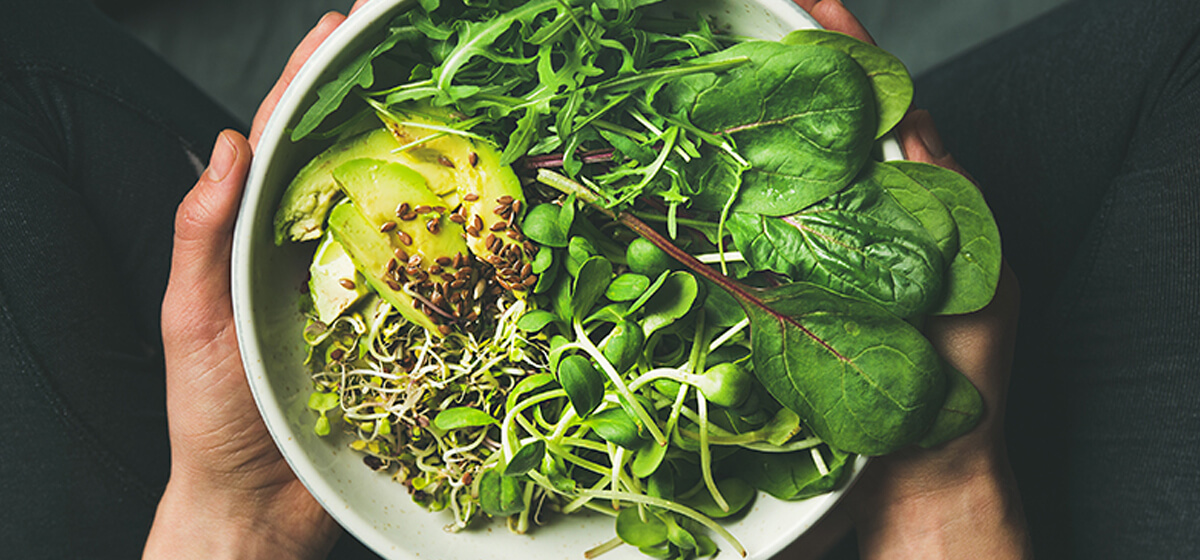
World Vegan Day was recently marked on 1 November where individuals around the world celebrated all things plant-based and the benefits of a vegan lifestyle. This year, it coincides with the beginning of the 26th United Nations Climate Change Conference of the Parties (COP26), where leaders across the world came together to discuss how to mitigate climate change.
According to research published in 2019, it uncovered that animal agriculture is responsible for 87%1 of greenhouse gas emissions and is the leading cause of climate change. Greening your diet is also the most effective way to reduce emissions.
As conversations surrounding global warming continues heating up, this timing serves as a fitting reminder as to what we can do through our everyday diets to combat climate change.
Going beyond the daily recycling and plastic-free efforts and in celebration of World Vegan Day, we’ve listed three easy ways you can give existing plant-based recipes a little twist when whipping up some vegan-friendly meals to share with your loved ones and get them onboard the green movement. Not only does this do good for the environment, it brings us numerous health benefits as well!
1. Swapping for a tofu patty into your sandwich
While one may often think of simply excluding a meat patty to keep our sandwiches vegan friendly, how about swapping it for a tofu “patty” to spice things up a little? These tofu patties are a great source or proteins and amino acids, which makes them a good and flavourful substitute for our regular meat patties!
To make these tofu patties, simply squeeze the excess water out of your block of firm tofu before marinating it with a combination of salt, pepper, garlic and onion powder. Then, coat each piece of tofu evenly with all-purpose flour and pan-fry them over medium heat until golden brown.
To make for a nutritious meal, assemble your sandwich with an array of vegetables – lettuce, tomatoes, cucumbers are our favourite!
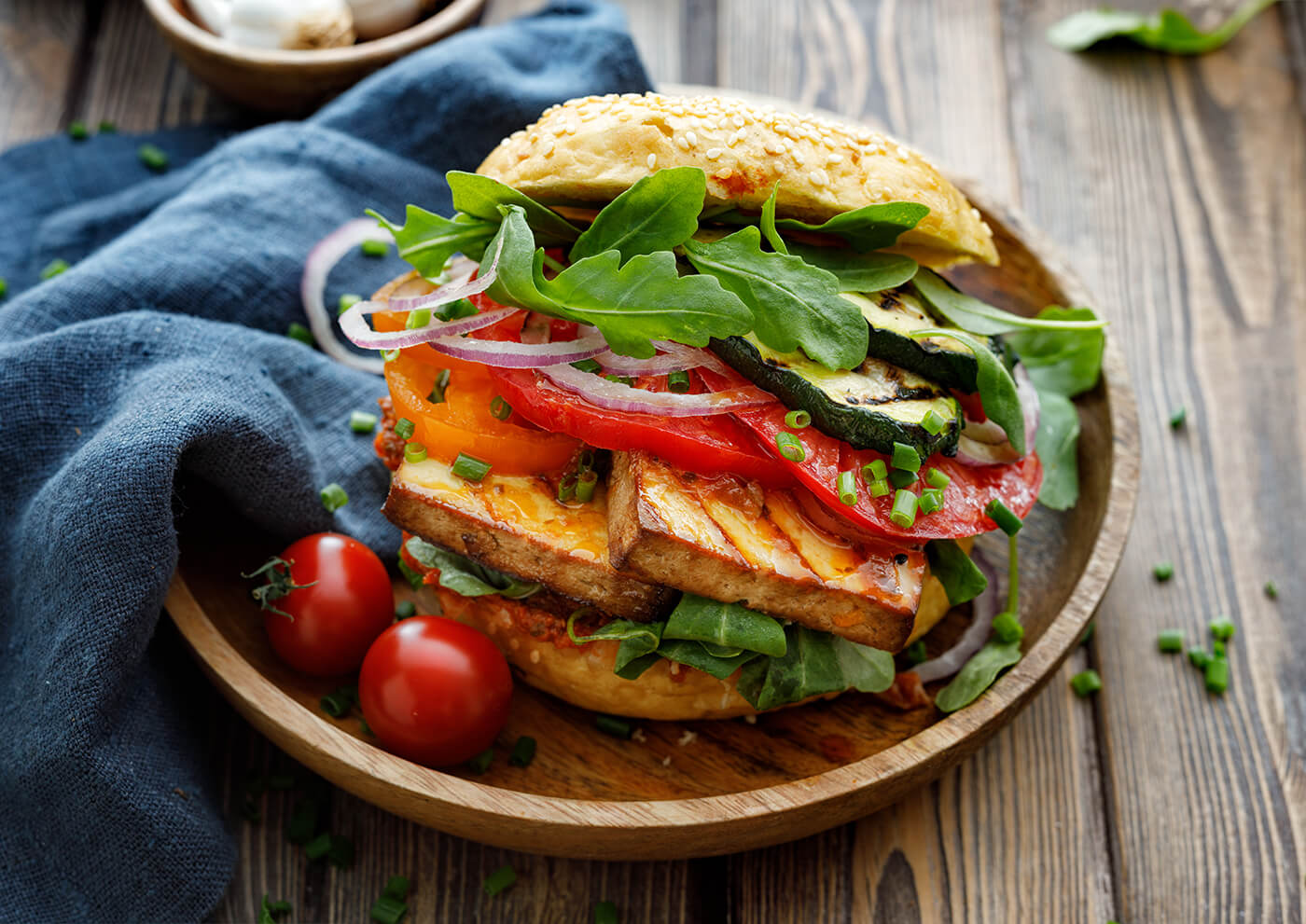
Take a step further on your sustainability journey by supporting local vegetables producer such as our Changemaker – ComCrop, for their range of locally grown produce, which includes the freshest Ruby Red and Emerald Green Lettuce – perfect additions to your sandwich.
You can also check out this tofu patty sandwich recipe – a perfect option if you’re looking for an easy meal on-the-go or for an outdoor picnic!
2. Switching up regular pasta for zucchini noodles
Hands up if you’re a big lover of pasta! As one of the easiest meals to whip up and easily personalised to our own liking, it’s no surprise that pasta is one of the world’s most well-loved dishes.
While we can easily opt for an all greens no meat pasta, how about switching things up and making zucchini noodles instead? This tasty alternative is not only a lighter option to carb-heavy pasta, but also a great source of vitamin C, vitamin A, potassium and iron. What’s more, its high-water content means it will keep you feeling full for a longer period of time, and it’s a great way to get those extra veggies into your diet!
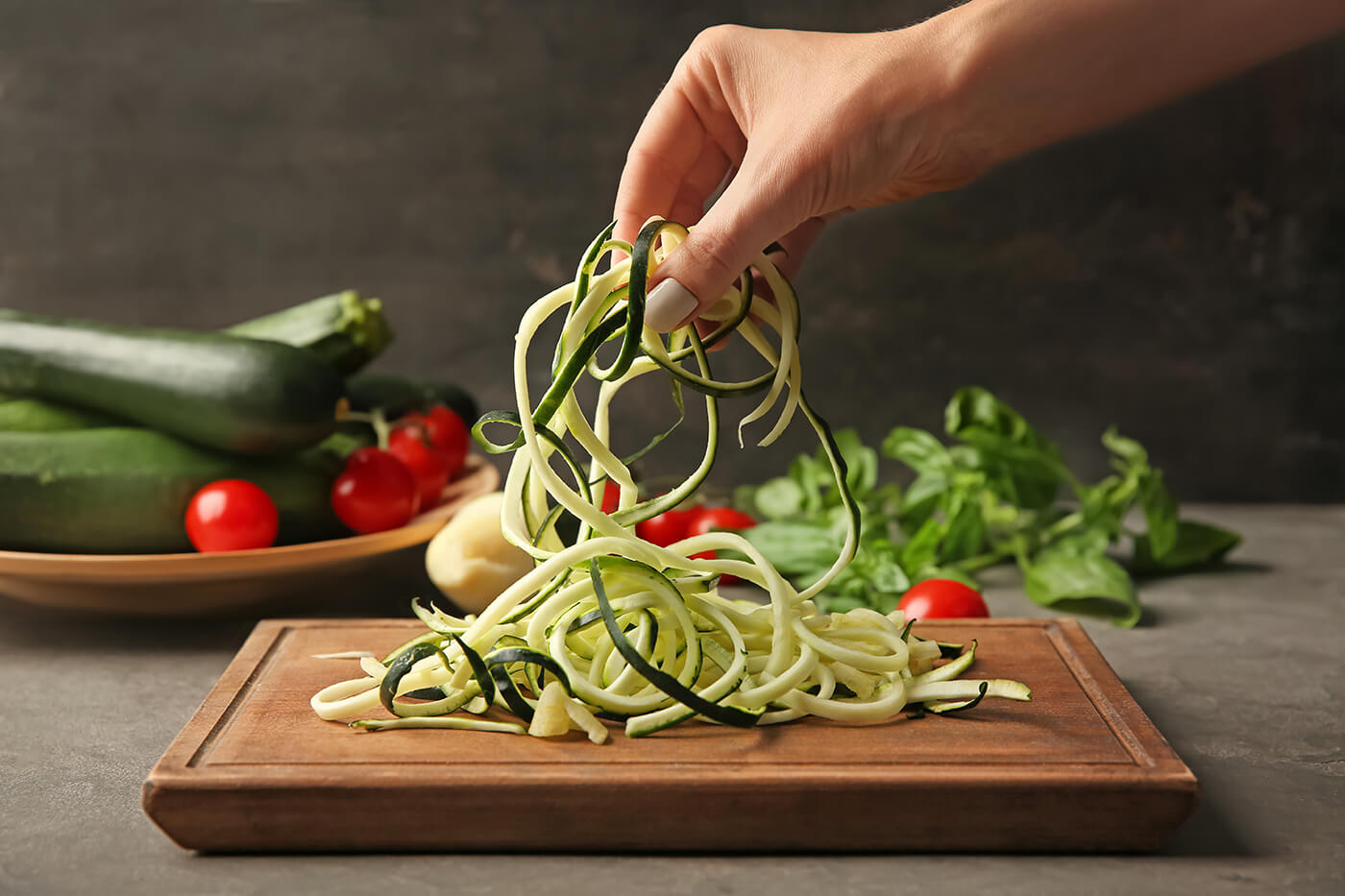
To make zucchini noodles, simply use a spiralizer to slice your zucchini into long ribbons.
Pro tip: When choosing your zucchini, opt for one that is slightly firm and has a glossy finish on its skin to prevent the zucchini noodles from turning out too mushy.
Thereafter, toss it in your favourite tomato-based pasta sauce and voilà! If you’re looking for a healthier pasta sauce alternative, you can also check out Comcrop’s delicious pesto rendition, made from the freshest basil grown locally!
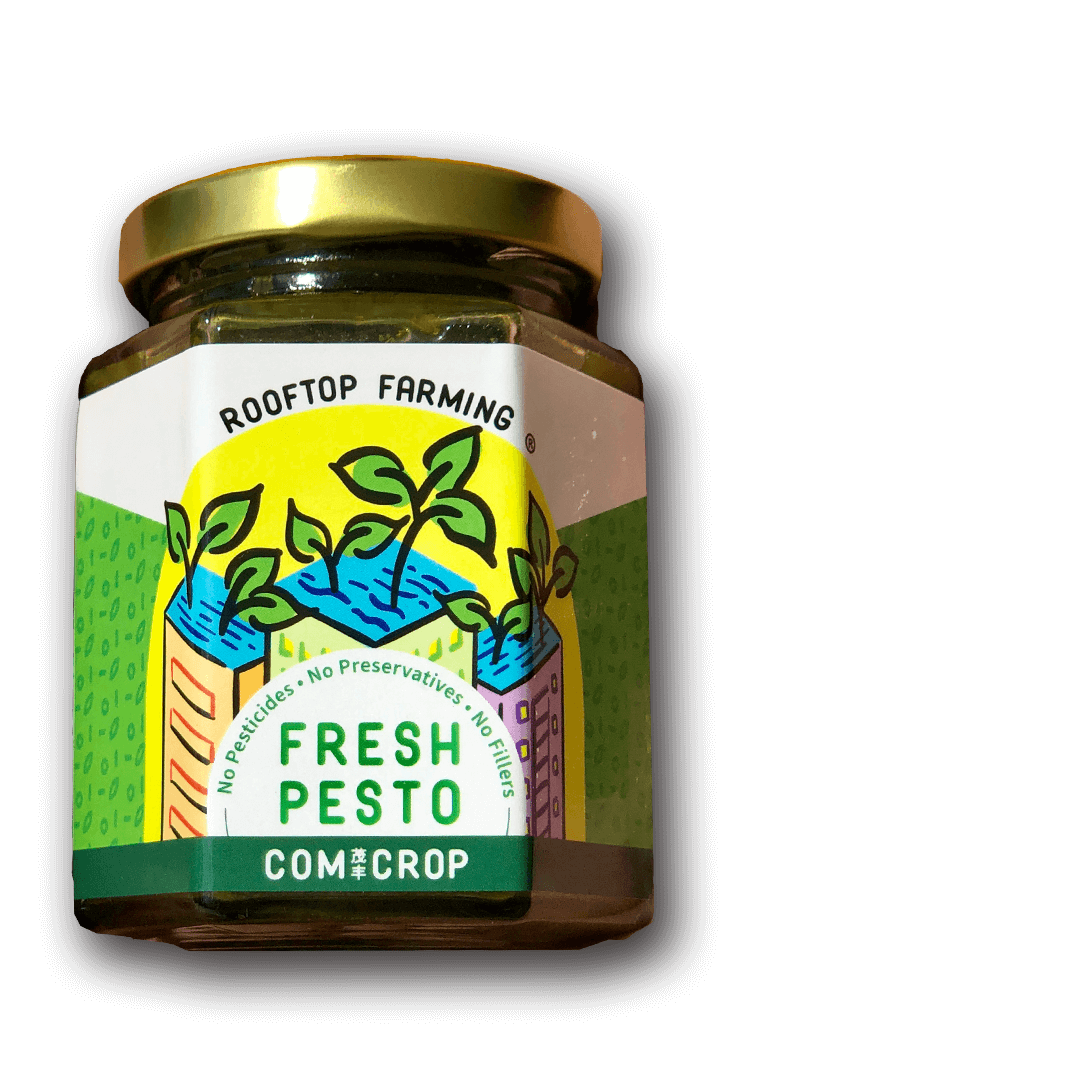
If you prefer making your pesto from scratch, check out this zucchini noodles pesto pasta recipe, that includes a step-by-step guide to making your own fresh pesto. Delicious!
3. Grated cauliflower in replacement of rice
If you lean towards an Asian palate, how about trying your hand at cauliflower fried rice? Instead of using regular rice, grated cauliflower is a yummy alternative that is not only healthier but hearty enough to serve as a main course.
In addition, these florets pack a load of vitamins and minerals. Being high in fibre, it not only promotes feelings of fullness but also helps to feed the healthy bacteria in your gut. To make cauliflower rice, start by washing them thoroughly before chopping it up into large chunks and grating them individually with a grater.
Quick tip: Use a medium-sized hole grater to achieve pieces that best imitate the texture of cooked rice.
Then, simply sauté them over medium heat with the rest of your ingredients like how you’d normally do when preparing regular fried rice. Lightly stir-fry till the cauliflower is slightly crispy on the outside but tender on the inside. Click here for the full recipe that also offers some vegan alternatives to our usual fried rice ingredients!
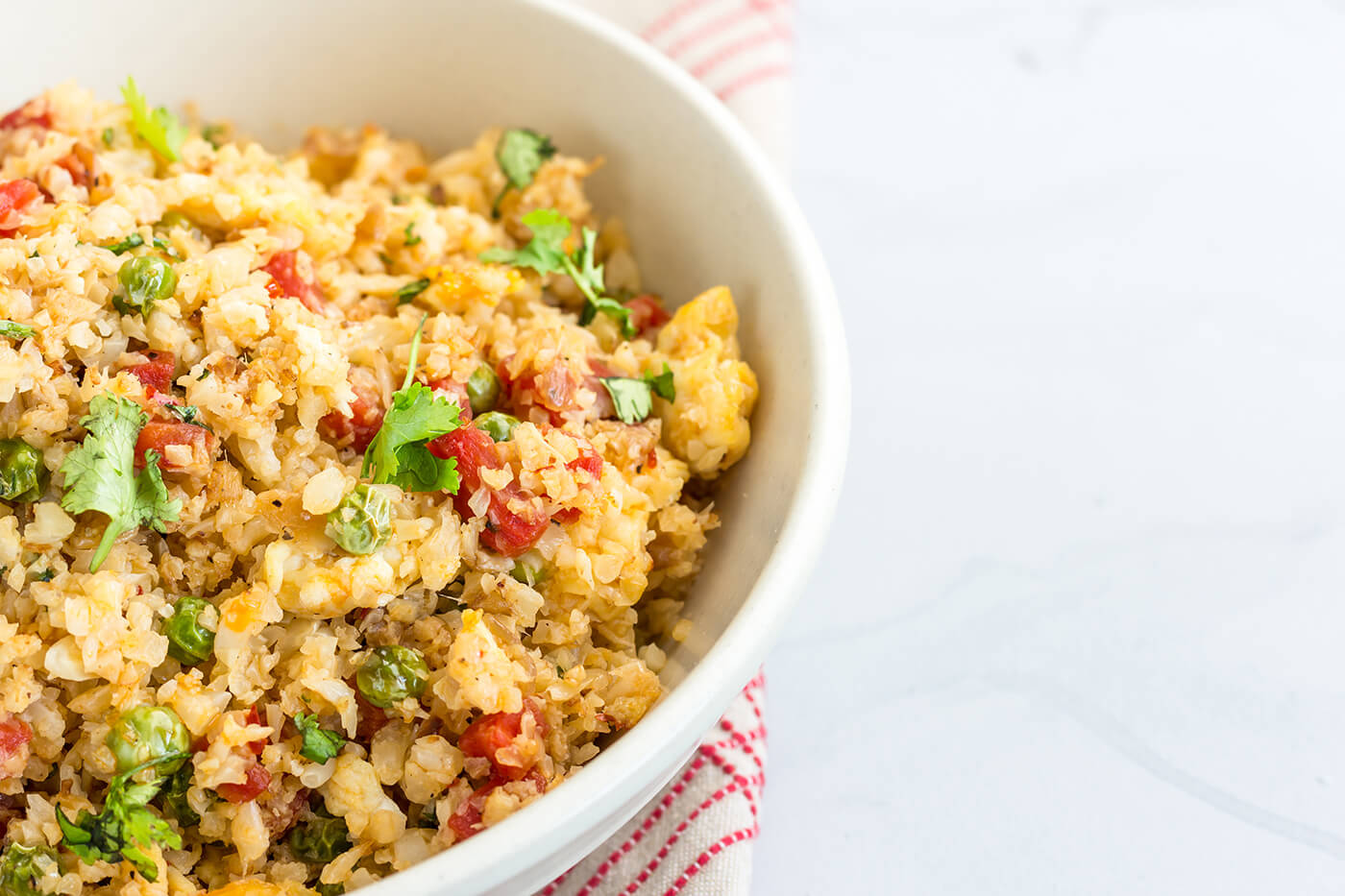
For a refreshing garnish to your fried rice, we’d highly recommend throwing in some microgreens. Though miniscule in size, these tiny greens pack a nutritional punch and delightful flavour. Best of all, they can be easily grown in small spaces, are easy to care for and only takes about a week to harvest! To learn how to grow your own microgreens, check out another of our Changemakers – Cultivate Central, for their tips to get started!
We hope these three suggestions help inspire you to recreate some of your favourite dishes so that they’re not just yummy but also better for Mother Earth. As we approach the year-end holidays, let’s #PowerTheChange and be #JollyGreen together by challenging ourselves to brainstorm some tasty vegan recipes for a greener year in 2022!
Image Credits: Nylon Coffee Roasters
Source: The Sustainability Project
References:
- 1 (2019) Climate Healers, Animal Agriculture is the Leading Cause of Climate Change – A Position Paper https://climatehealers.org/the-science/animal-agriculture-position-paper/
